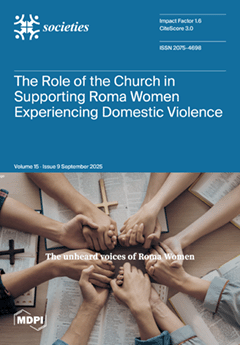This article reconceptualises London as a
learnt city, a dynamic learning ecosystem co-produced through digital mediation, affective experience, and embodied practice. Focusing on international university students in London, a transient, hyper-digital city, we employ a participatory reflective-mapping methodology to examine how urban
[...] Read more.
This article reconceptualises London as a
learnt city, a dynamic learning ecosystem co-produced through digital mediation, affective experience, and embodied practice. Focusing on international university students in London, a transient, hyper-digital city, we employ a participatory reflective-mapping methodology to examine how urban learning unfolds across mediated, affective, and experiential layers of city life. The mediated
city describes students’ imaginaries shaped by digital media and mapping apps. The affective
city captures emotional registers, such as nostalgia, autonomy, and (dis)orientation, that emerge during urban adaptation. The experiential city foregrounds embodied engagements: movement, infrastructure use, routine navigation, and elective belonging. These three dimensions interweave to form an “urban collage,” revealing how students continuously remake both their identities and the city itself through integrated online and offline practices. The article advances critical urban and communication studies by contesting technocratic and neoliberal framings of urban learning. It positions learning as inherently spatial, affective, and relational—a sense-making process enacted in everyday urban experiences. By framing the city as a contested site of knowledge production and identity formation, this article contributes to debates in digital urbanism and critical digital pedagogy. The
learnt city concept offers a novel lens for understanding how global cities—characterised by frictions of belonging and mobility—are lived, known, and shaped by those negotiating their multiple mediated, affective, and material dimensions.
Full article





